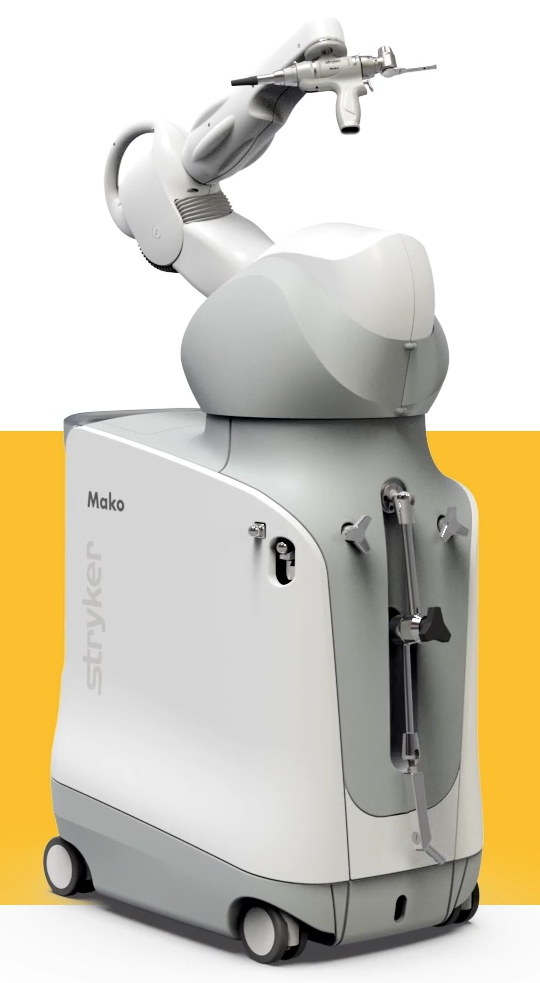Hip and Knee Replacement
The Total Joint Services program at Henderson Hospital focuses on hip and knee replacement surgery. Total hip or knee replacement involves replacing diseased joint cartilage with artificial materials. Joint cartilage is a tough, smooth tissue that covers the ends of bones where the joints are located. It allows joints to move with minimal friction.
Total hip or knee replacement procedures are most commonly performed in people who have a severe form of osteoarthritis, a common degenerative condition of the joints that is usually associated with aging (age 45 and up). Other indications for joint replacement are trauma or injury, rheumatoid arthritis (in which the body's immune system attacks joint membranes), and bone deformities.
Hip and Knee Problems on the Rise
About one million hip and knee replacement procedures are performed in the US each year, according to the National Insititue of Arthritis and Musculoskeletal and Skin Diseases, part of the National Institutes of Health (NIH); this is expected to increase in the coming years due to an aging population. Nearly 70 million people in the US have some form of arthritis or chronic joint symptoms, according to the NIH. Nearly 21 million US adults have osteoarthritis, and most people over 65 have osteoarthritis in at least one joint.
Wear and Tear of Osteoarthritis
In osteoarthritis, wear and tear over time, trauma, repetitive movement, or for no apparent reason, joint cartilage wears down, exposing the ends of bone. It is not known why some people with osteoarthritis go on to develop a severe form of the condition while others live for years with the condition and do not experience the type of severe pain or disability that requires joint replacement.
Before joint replacement is recommended, doctors usually try the following therapies and recommendations:
- Acetaminophen or anti-inflammatory pain relievers on a daily or regular basis (hip or knee pain)
- Exercise and/or physical therapy (hip or knee pain)
- Weight reduction - for those overweight (hip or knee pain)
- Walking devices (hip pain)
- Knee braces (knee pain)
- Rest or activity modification (hip or knee pain)
- Ice following certain activities (hip or knee pain)
- Synovectomy, which is surgical removal of inflamed synovial tissue, the tissue that lubricates moving parts of a joint (knee pain)
- Osteotomy, which is restructuring of the bones to shift stresses from diseased tissue to more healthy tissue (hip or knee pain).
Mako SmartRobotics™
 Surgeons at Henderson Hospital use Mako SmartRobotics™, an innovative solution for many suffering from painful arthritis of the knee or hip. Mako uses 3D CT-based planning software so your surgeon can know more about your anatomy to create a personalized joint replacement surgical plan.
Surgeons at Henderson Hospital use Mako SmartRobotics™, an innovative solution for many suffering from painful arthritis of the knee or hip. Mako uses 3D CT-based planning software so your surgeon can know more about your anatomy to create a personalized joint replacement surgical plan.
Scan. It all starts with a CT scan so your surgeon can know more about your anatomy.
Plan. The CT scan is used to create a 3D CT-based model of your joint. Your surgeon uses this 3D model to create a personalized surgical plan and assist your surgeon in performing your joint replacement procedure.
Mako Can. In the operating room, your surgeon follows your personalized surgical plan while preparing the bone for the implant. The surgeon guides Mako’s robotic arm within the predefined area, and Mako’s AccuStop™ technology helps the surgeon stay within the planned boundaries that were defined when the personalized preoperative plan was created. By guiding your doctor during surgery, Mako’s AccuStop™ technology allows your surgeon to cut less by cutting precisely what’s planned to help protect your healthy bone.
It’s important to understand that the surgery is performed by an orthopedic surgeon who guides Mako’s robotic arm during the surgery to position the implant in the knee and hip joints. Mako SmartRobotics™ does not perform surgery, make decisions on its own or move without the surgeon guiding it. Mako also allows your surgeon to make adjustments to your plan during surgery as needed.
Hip Replacement
In a total hip replacement, also known as total hip arthroplasty, the damaged bone and cartilage is replaced with prosthetic (artificial) components. The damaged head of the femur (thigh bone) is replaced with a metal stem that is placed into the hollow center of the femur; this stem may either be cemented or pressed into the bone. A metal or ceramic ball replaces the damaged femoral head. The damaged cartilage surface of the socket (acetabulum) is replaced with a metal socket and screws or cement are used to hold the socket in place. A spacer, made of plastic, ceramic or metal, is placed between the new ball and the socket to allow for smooth gliding similar to that of a natural joint.
The procedure generally lasts from one to two hours and involves a 6- to 8-inch incision made over the side of the hip. In recent years, a minimally invasive version of standard hip replacement surgery has become more common. In this procedure, the surgeon uses smaller incisions and there is usually a shorter recovery time for the patient as compared to traditional hip replacement. Candidates for minimally invasive hip replacement surgery are generally under age 50 and have a body mass index in the 'normal' range.
Most people who undergo total hip replacement begin standing and walking with the help of a walker and a physical therapist the day after surgery. Exercise is a critical part of recovery, particularly in the first few weeks after surgery. Most people resume light activities of daily living within three to six weeks after surgery.
Knee Replacement
A knee replacement, also known as knee arthroplasty, involves building up the surface of bones where cartilage damage has occurred. The damaged cartilage surfaces at the ends of the femur (thigh bone) are removed along with a small amount of bone. The surgeon replaces the removed cartilage and bone with materials made of metal that mimics the surface of the joint. These may be cemented or pressed to fit the bone. The undersurface of the patella (kneecap) is resurfaced with a plastic material in some cases. A plastic device called a spacer is inserted between the metal material and the bone to create a smooth, gliding surface that is similar to that of a real joint.
Find a Doctor
To obtain a referral to a doctor who practices at Henderson Hospital, contact our free physician referral service at 702-388-4888.
Individual results may vary. There are risks associated with any surgical procedure. Talk with your doctor about these risks to find out if minimally invasive or robotic surgery are right for you.
